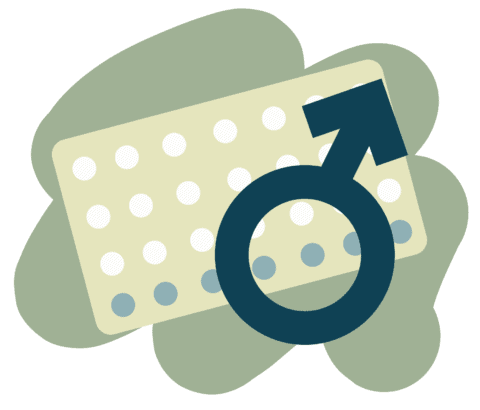Recent developments in the field of male birth control are showing great promise, but it’s important to consider the risks involved with hormonal methods of contraception before championing them.
Before moving forward, I’d like to take a minute to say we’ll be talking candidly about things like balls, wieners and jizz, so if the idea of reading an article where I make immature double entendres about sex doesn’t appeal to you — that means you, Grandma — feel free to pull out whenever you feel like it.
Much like flying cars, male birth control seems to be something that’s a fixture of the future exclusively but never actually comes into existence. However, new science is suggesting that a male counterpart to forms of female hormonal birth control may be getting shot in your ass sooner than you think.
An October 2016 study conducted by the World Health Organization found that hormonal injections in 320 men were effective in lowering sperm counts to about 1 million per milliliter — which is still a bountiful supply but apparently quite low by semen standards.
million per milliliter — which is still a bountiful supply but apparently quite low by semen standards.
To be fair, this is revolutionary. Birth control is something many university students are heavily reliant on, but the burden of that responsibility overwhelmingly skews towards females.
IUDs aside, other medical forms of birth control include pills and shots, which women take in order to ensure they can exercise their right to a round rogering without risking pregnancy. I’m sure there are many feminist arguments against this stigma of burden, so I won’t get into that, but I think it’s fair to say that this responsibility is at the very least a two-way street.
Male-oriented forms of contraception are already out there — condoms, vasectomies and pulling out, the “honorable mention” of birth control — but these are all unappealing or ineffective practices in one way or another. Condoms are unfairly regarded as a drag, pulling out is debunked and, if you’ve got a thing about having your scrotum cut open, a vasectomy might seem a little invasive.
Hormonal male birth control is then an equitable counterpart to “the pill.” However, that equity is a little too real when it comes to the side effects side of things.
The WHO report showed that men receiving these injections reported increased acne and mood instability. Sarah Hagi at Broadly also reported that men left a Danish study on hormonal male birth control due to complaints about side effects like muscle pain, mood swings and erectile dysfunction.
Surely it’s unfair to expect men to endure those kinds of side effects for the sake of infertility. After all, if you’re sore all the time, can’t get a boner and are kind of an asshole, your love life is probably going to take a bit of a hit.
That’s the catch. These are the kinds of side effects many women already subject themselves to because of their birth control. It’s not good that women have to fuck their bodies up hormonally in order to avoid getting pregnant — period. Whether or not the trade off makes it fairer is debatable, but it’s inarguable that those side effects are unfortunate.
It’s the same thing with men. Hormonal male birth control will have adverse side effects, which sucks — but it’s not like this is only a problem on our end. Medically altering your hormones for any purpose is going to have multiple impacts.
That said, an alternative to hormonal male birth control is making its emergence as well.
Vasalgel injections may be available as soon as 2018. The injection is administered to each testicular tube and implants a tiny amount of a synthetic gel that allows for the passage of semen and fluid, but not sperm.
Injections can be effective for up to 10 years, have yet to show serious side effects, are reversible at any time and trials in India show them to be near perfect in effectiveness.
While male birth control may be new, it’s still the same old story. The effects of hormonal birth control will continue to be a hassle for those who use it, but we can happily expect that those practices will soon be antiquated and unnecessary.
—
Zach Tennent / Opinions Editor
Graphic: Lesia Karalash / Graphics Editor